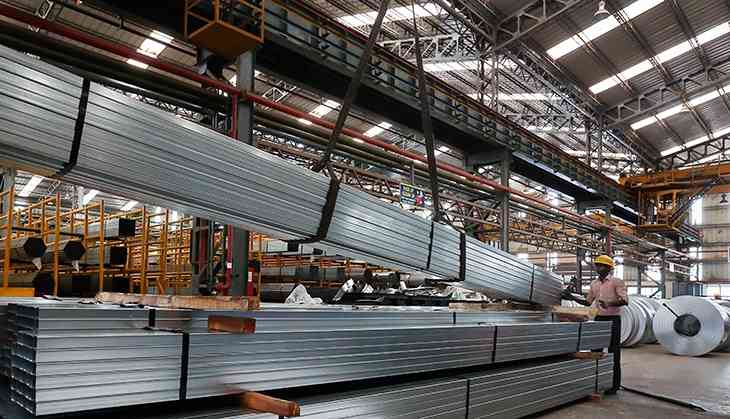Invoking Bankruptcy Code: Indian Banks must not miss silver lining in steel sector

Over the past five years, Indian banks have given a long rope to companies struggling to repay their debts. From moratorium on interests to corporate debt restructuring to strategic debt restructuring, every possible scheme in banking parlance was used to allow the promoters of big corporate houses to bring their companies out of the woods.
But nothing worked. Now, the Reserve Bank of India, with its newly found powers, courtesy the amendment in the Banking Regulation Act, has asked banks to take 12 big corporate accounts to be referred for bankruptcy proceedings.
The marching orders from the RBI have prompted a forum of lenders, lead by India's largest bank, State Bank of India (SBI) to take three large non-performing accounts, namely Bhushan Steel, Essar Steel and Electrosteel Steels to the National Company Law Tribunal (NCLT) for invoking the Insolvency and Bankruptcy Code.
Based on the publicly available figures, the three companies contribute roughly Rs 1 lakh crore to the banking sector's non-performing assets pile up.
Bankruptcy is the last resort that allows lenders and debtors to come to terms with whatever is left in a failed business and recover whatever possible dues through a fire-sale of the bankrupt company's assets.
But in the risky business of lending, the lender must have the ability to see a silver lining in the dark cloud to avoid large losses.
All the three companies chosen for reference to the NCLT belong to the Steel Sector, which is one of the few sectors that has begun to look promising due to government policies.
The steel sector
Take into account the following numbers for the steel sector.
-
“India’s steel sector posted a robust 11% growth in production in 2016-17 at 101.2 MT,” according to the Joint Plant Committee. In the same period, while exports grew by 102% to 8 mt, imports fell by 36% to 7.4 mt, making India a net exporter of steel.
-
Since April 2015, the Indian government has taken a slew of measures to check dumping by Chinese steel companies at Indian shores, by way of raising import duty, imposing minimum import price, and applying anti-dumping and safeguard duties on imports.
-
Cheap steel exports from China has troubled steel companies all over the world and the moment the Indian government took steps to safeguard its industry, the future began to look promising.
-
To give a further fillip to the domestic industry, the government, in May this year, launched a policy that gives preference to indigenous steel makers in government projects, As a result, domestic gas company GAIL barred Chinese companies from its pipeline projects worth Rs 3,000 crore in favour of domestic firms.
-
Moreover, the government has committed investments worth Rs 3.96 lakh crore in the infrastructure sector in the current financial year, which should spur demand for steel products.
The three companies
Does a bright future for the steel industry guarantee a change in fortunes for these three companies?
Certainly not. It is quite possible that even if the demand for steel goes up in the country, not every company will be able to benefit from it.
For example, in 2016-17 SAIL, RINL, Tata Steel, Essar, JSWL & JSPL together produced 57.5 MT, a growth of 18.5% compared to the corresponding period last year, while production for other producers was down by 1.2%, as reported by the Financial Express.
Yet, it makes sense to look at the pre-crisis days performance of today's laggards.
According to the Hindu Businessline, for Bhushan Steel, “between financial years 2006 and 2010, while debt repayments ranged between Rs 55 crore and Rs 316 crore a year, cash from operations (profit after tax plus non-cash expenses) was much higher, at around Rs 400 crore each year.”
In those good old days, the Brij Bhushan Singhal promoted company “clocked net profit growth at a compound annual growth rate of 53%,” according to the newspaper.
Though, one cannot ignore the tainted image of the company promoters in the Syndicate Bank's cash-for-loan and coal scams. But the tainted image of a debtor does not matter to lenders.
Essar Steel on the other, hand is a part of a very large international conglomerate promoted by Ruia brothers, which was once in the fray to acquire Corus (Later acquired by Tata group).
The past few years have not been great for the group as it had stakes in sectors like power, oil & natural gas and communications that have been marred by lower revenue relaisation from operations due to unfavourable domestic as well as international conditions.
But the promoters have taken their hands off the oil & gas business by selling their stake to Russian oil major Roseneft for an amount of $13 billion ( Around Rs 86,000 crore at the time of the deal). The promoters have sought to use the cash from the deal to repay group's consolidated debt. At the same time, the promoters have also expressed interest in saving their equity in Essar Steel, as after exiting the Oil business, this remains the only substantial business for the group.
For Electrosteel Steels, the problem began with “raw material supply for its 2.51 million tonne steel and ductile iron project. It had an irrevocable offtake agreement with Electrosteel Castings, a promoter group company, for procurement of coking coal and iron ore at a cost plus mark-up during the loan agreement with lenders,” according to Business Standard.
Electrosteel Castings lost its coal mines in Jharkhand with reserves of 231 million in the same Supreme Court order on deallocation of coal blocks in 2014.
This forced Electrosteel Steels to buy raw material from the market at high prices even as the finished product prices declined. The company's operating losses rose to Rs 172 crore in 2014-15 and interest costs grew by 155% to Rs 452 crore in 2014-15.
While, the problems these companies face may last forever, but at the same time the lenders need to consider how much money will they recover through the sale of assets in the market in case of bankruptcy.
Liquidation of assets will require banks to take very big haircuts, leading to the erosion of their capital base. Therefore, the decision to dissolve a company should come as a last resort and only when the silver lining fades into the dark.
First published: 24 June 2017, 8:41 IST

